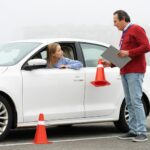In an era of ever-evolving digital technologies and the increasing importance of secure information exchange, the transmission of confidential materials to Department of Defense (DoD) agencies requires meticulous attention to security and compliance. DoD agencies handle sensitive information vital to national security, making the safeguarding of such materials paramount. Whether you are a government employee, a contractor, or a partner collaborating with the DoD, ensuring that you transmit confidential materials securely is of the utmost importance.

This article aims to explore various methods that may be used to transmit confidential materials to DoD agencies, emphasizing the importance of adhering to established protocols and guidelines. It will provide an overview of the methods, as well as their associated advantages and considerations. Our information is based on reliable sources such as the U.S. National Archives and an expert-verified answer from Brainly.com.
1. Classified Mail and Government Courier Service
One of the most traditional and widely accepted methods for transmitting confidential materials to DoD agencies is through classified mail and government courier services. This approach is a secure means of transporting sensitive documents, and it is characterized by the following key features:
A. Classified Mail
- Classified mail involves the use of the United States Postal Service (USPS) or a commercial delivery service that has been authorized to handle classified materials.
- All classified materials must be properly marked and packaged according to established guidelines, ensuring they are not readily identifiable as sensitive documents.
- Classified mail is typically used for documents up to the “Confidential” classification level, as it offers a reliable, secure, and cost-effective means of transmission.
B. Government Courier Service
- For materials that exceed the “Confidential” classification, government courier services are employed. These services are usually provided by trained government personnel or contractors.
- Government couriers are equipped to handle materials classified as “Secret” or “Top Secret.” They are cleared individuals who have undergone extensive background checks and received proper training in the handling and transportation of sensitive information.
Advantages of Classified Mail and Government Courier Service:
- Well-established and trusted method.
- Clear guidelines and procedures for packaging and handling classified materials.
- Controlled and traceable transportation.
Considerations:
- Materials should be properly classified and marked.
- Compliance with DoD and other government agency regulations is essential.
- Government couriers should undergo security clearance checks.
2. Protected Facsimile (Fax)
The use of facsimile machines, commonly known as fax machines, is another method for transmitting sensitive materials to DoD agencies, provided that they are appropriately protected and secure. The following aspects must be considered when using protected facsimile for transmitting confidential materials:
A. Secure Fax Machines
- Secure fax machines should be used to ensure that the transmitted information remains confidential.
- These machines often employ encryption technologies to safeguard the transmitted data from interception or tampering.
B. Security Protocols
It is crucial to implement strong security protocols, such as access controls, authentication, and encryption, to protect the confidentiality and integrity of the transmitted materials.
C. Secure Fax Lines
The connection between the sender and receiver should be a secure, dedicated fax line to minimize the risk of interception by unauthorized parties.
Advantages of Protected Facsimile:
- Immediate transmission of documents.
- Familiar technology widely used in government agencies.
- Secure fax machines offer encryption for added security.
Considerations:
- Adequate encryption and security measures must be in place.
- Verification of the recipient’s fax number is crucial to prevent misdirected transmissions.
- Regular maintenance and updates of fax machines and security protocols are necessary.
3. Direct Interaction and Secure Communication
Direct interaction between authorized individuals who have been properly approved is another method for transmitting confidential materials. This method involves face-to-face meetings or secure electronic communication channels. Here are some key aspects to consider:
A. In-Person Meetings
- In cases where direct interaction is necessary, individuals may meet in secure, controlled environments.
- These meetings may involve the exchange of physical documents or the sharing of classified information in a controlled setting.
B. Secure Electronic Communication
- Secure electronic communication channels can be employed when the transmission of digital documents is required.
- These channels often use encryption and authentication measures to ensure the security of the information being shared.
Advantages of Direct Interaction and Secure Communication:
- Provides a high level of control over the transmission process.
- Suitable for discussing sensitive matters that may not be suitable for written documentation.
Considerations:
- Proper security measures and encryption are essential for electronic communication.
- In-person meetings should take place in secure locations, and participants should be cleared for handling the relevant classification levels.
4. Secure Electronic Transmission
In an increasingly digital world, secure electronic transmission has become a common method for sharing information, even when it involves confidential materials destined for DoD agencies. This approach includes several sub-methods:
A. Secure Email
- Secure email services with end-to-end encryption are employed to transmit sensitive documents electronically.
- Users must adhere to strict security protocols and employ strong authentication methods.
B. Secure File Transfer Protocols
- Secure file transfer protocols, such as SFTP (Secure File Transfer Protocol) and SCP (Secure Copy Protocol), can be used to securely transfer files between parties.
- These protocols ensure the encryption and secure transmission of files.
C. Secure Document Management Systems
- Document management systems with built-in security features can be used to store and share confidential materials within a controlled environment.
- Access controls and encryption mechanisms are typically implemented within these systems.
Advantages of Secure Electronic Transmission:
- Efficient and convenient for digital documents.
- Allows for remote collaboration on sensitive projects.
- End-to-end encryption provides a high level of security.
Considerations:
- Robust encryption and authentication mechanisms are necessary.
- Compliance with DoD cybersecurity guidelines is crucial.
- Regular updates and patches should be applied to software and systems to mitigate vulnerabilities.
5. Secure Cloud-Based Storage and Sharing
Cloud-based storage and sharing services have gained popularity in recent years due to their convenience and accessibility. While they offer advantages for collaboration, they must be used cautiously when transmitting confidential materials. Key points to consider include:
A. Secure Cloud Services
- Utilizing cloud services with advanced security features and encryption is essential for storing and sharing sensitive documents.
- Access controls and strong authentication mechanisms should be in place.
B. Data Encryption
Encrypting data both at rest and during transmission is vital to protect confidential materials stored in the cloud.
Advantages of Secure Cloud-Based Storage and Sharing:
- Facilitates remote access and collaboration.
- Automatic backup and version control are often included.
- Reduces the need for physical document exchange.
Considerations:
- Select cloud services that comply with DoD and government security standards.
- Implement strict access controls to limit who can access the materials.
- Regularly monitor and audit access to the cloud-based storage.
6. Secure Postal and Courier Services
When it comes to transmitting confidential materials that need to be physically transported, secure postal and courier services are crucial. These services often cater to materials that require a higher level of protection, such as “Top Secret” documents. Here are some important aspects to consider:
A. Specialized Courier Services
- Specialized courier services that are cleared and authorized to handle classified materials are used for the highest classification levels.
- These couriers follow strict security protocols and transport the materials in secure containers.
B. Secure Packaging
Confidential materials should be securely packaged in containers that provide protection against tampering and environmental conditions.
Advantages of Secure Postal and Courier Services:
- Suitable for the highest classification levels.
- Well-established procedures and guidelines for handling sensitive materials.
- Offers end-to-end control over the transportation process.
Considerations:
- Materials must be properly classified and marked.
- Compliance with DoD and government agency regulations is essential.
- Government couriers should undergo security clearance checks.
Conclusion
Transmitting confidential materials to DoD agencies is a critical and highly regulated process that demands the utmost attention to security and compliance. The choice of transmission method should be based on the classification level of the materials and the specific requirements of the agency. It is imperative to stay updated with the latest security guidelines and standards set by the DoD and other relevant government bodies.
In this article, we have discussed various methods for transmitting confidential materials, ranging from traditional means like classified mail and government courier services to modern digital options such as secure electronic transmission and cloud-based storage. Each method has its advantages and considerations, and the decision on which one to use should be made with careful consideration of the specific needs and requirements of the DoD agency involved.
Ultimately, the security and confidentiality of the materials should remain the top priority, and individuals responsible for transmitting such materials should undergo proper training and maintain a strong commitment to safeguarding sensitive information. By adhering to established protocols and guidelines, you can ensure that confidential materials are transmitted to DoD agencies securely and in compliance with the highest standards of national security.




